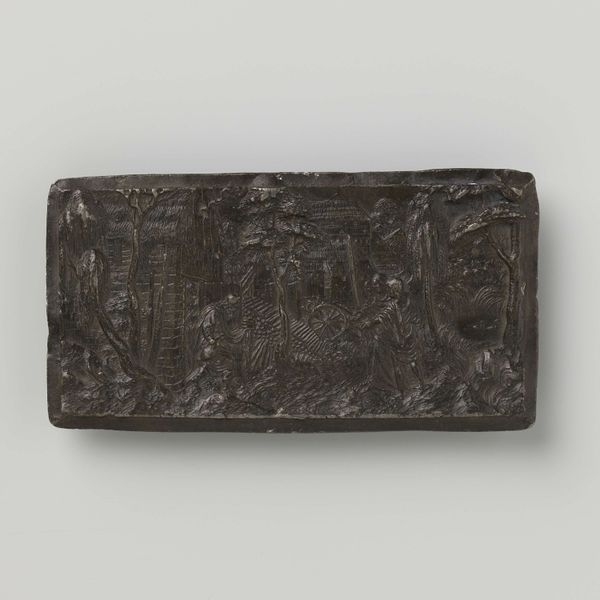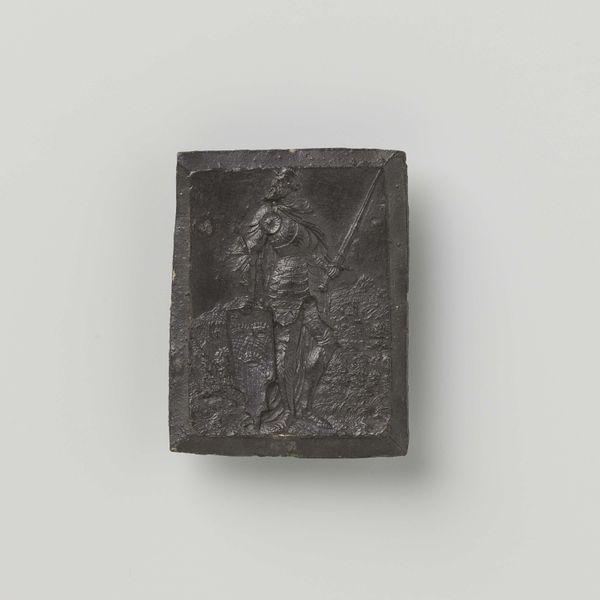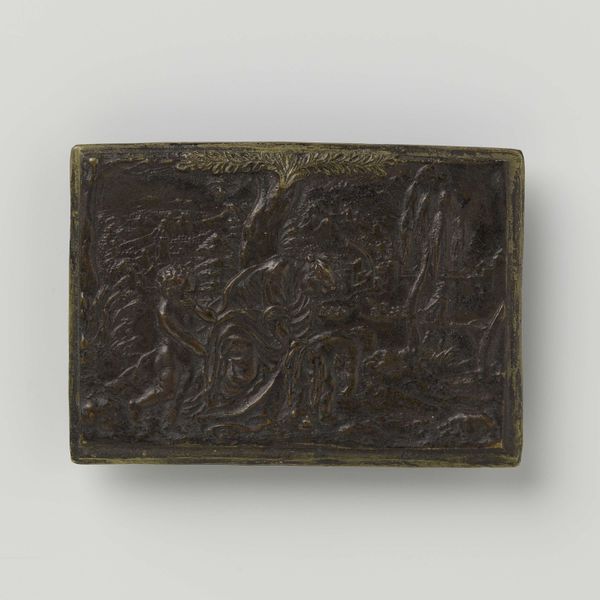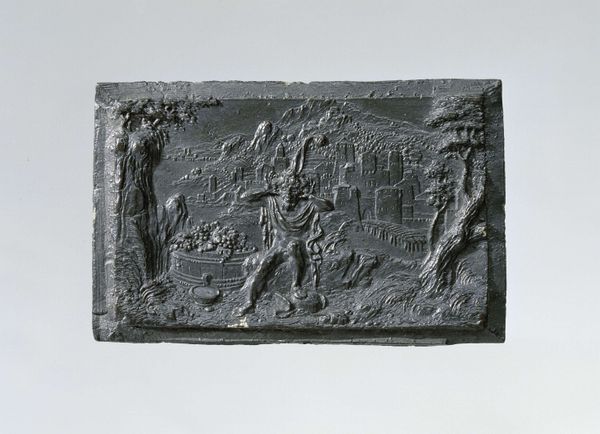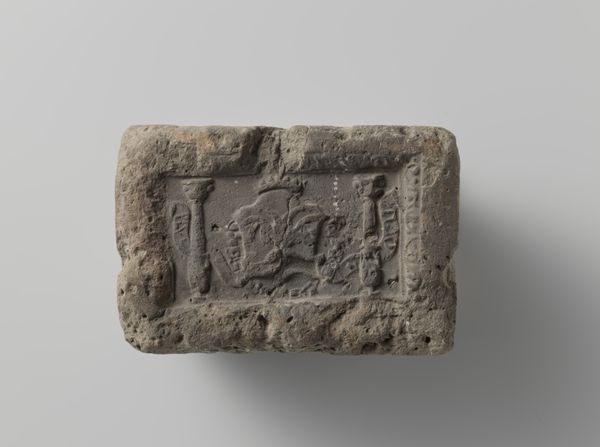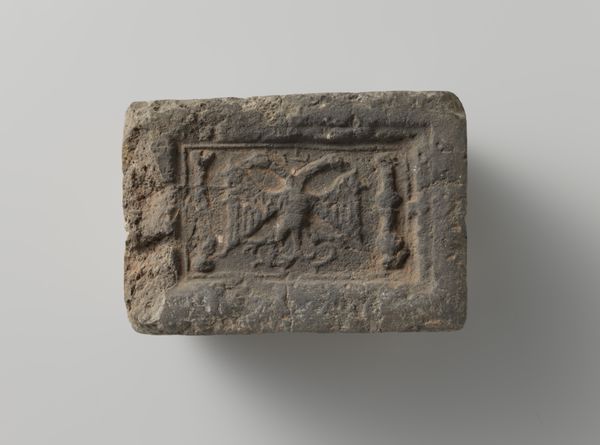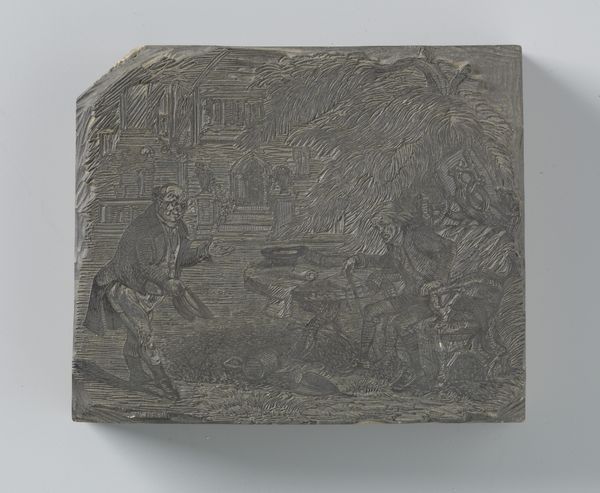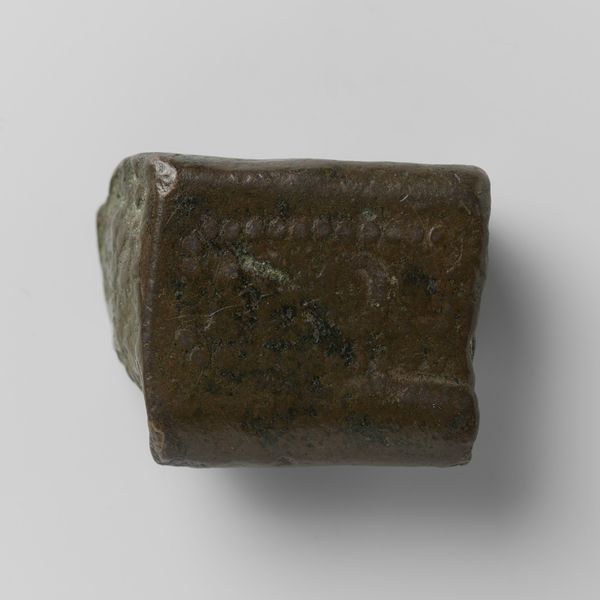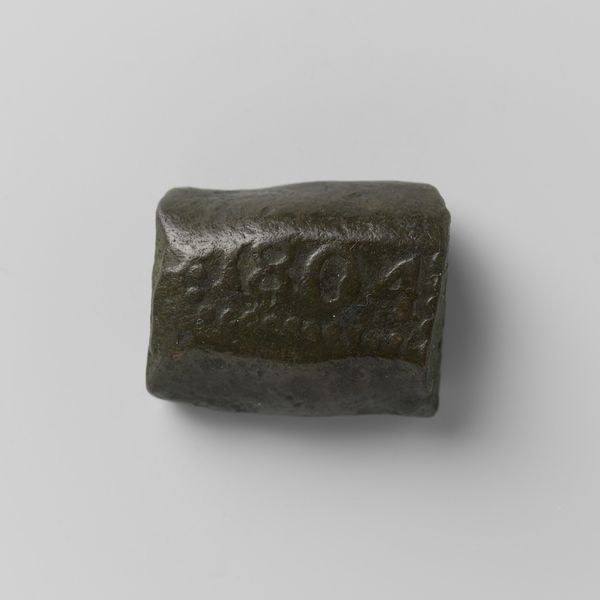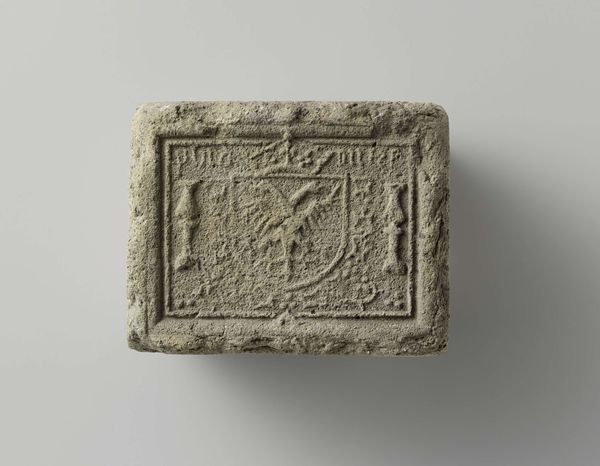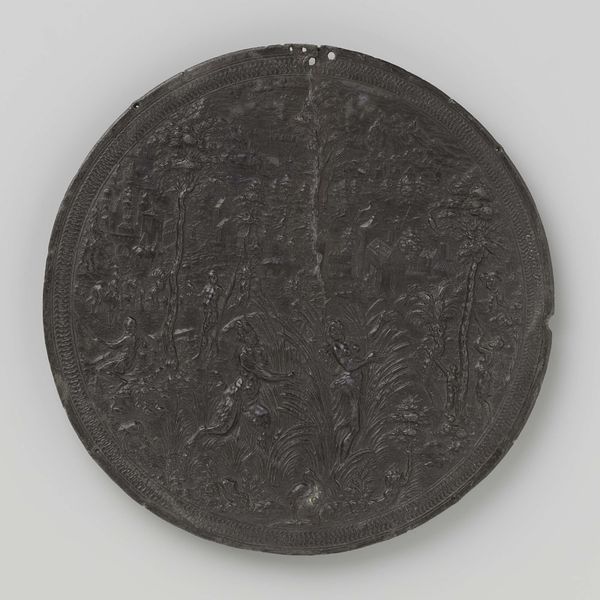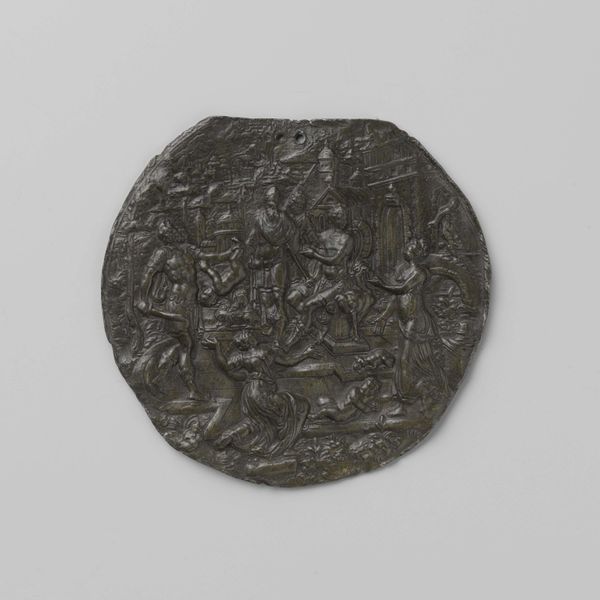
relief, wood
#
narrative-art
#
relief
#
wood
#
genre-painting
#
northern-renaissance
Dimensions: height 4.5 cm, width 6.8 cm, weight 28
Copyright: Rijks Museum: Open Domain
Curator: At first glance, there is something weighty and somber about the coloring here. Is it made from metal? Editor: It’s a Northern Renaissance wood relief, tentatively titled "The Beggar," crafted sometime between 1525 and 1550 by Peter Flötner. He was quite active during the Reformation, a period where social and religious turmoil dramatically reshaped identities. The stark presentation in wood underscores these harsh realities, wouldn't you agree? Curator: I agree that the choice of material gives the scene a certain grittiness. There is so much emphasis on labor, isn't there? The work shows what seems to be a scene of begging, a barrel by a wall. What commentary is Flötner trying to offer with these humble objects? Editor: I think the focus here challenges established class hierarchies. The choice to immortalize such a scene—not a heroic battle or noble portrait, but a beggar—speaks to a changing societal awareness of those living in poverty. This was the Reformation; people were starting to ask who was really in control of the distribution of resources, spiritual and earthly. The scale and carving give dignity to this scene. Curator: It seems as if he is trying to connect more universally with what would normally be on the fringe, giving them dignity through this new medium of readily reproducible artwork. The social dimensions of Flötner’s choices cannot be ignored. Editor: Exactly. It’s not merely observing; it is creating something tangible, out of wood that has labor in itself. The wood's rawness forces the viewer to confront labor in all senses of the word: the artist's, the carver’s, and that of the impoverished person depicted. This is further embodied by the figure's interaction with the landscape around him, as if nature and toil are intrinsically linked. Curator: The labor of both the portrayed beggar and Flötner become essential aspects of experiencing the work, as this new status given to an anonymous beggar is only realized through such tactile actions. Editor: Indeed. It underscores the relationship between the physical world, production, and human value—a core aspect of materialist thought. Flötner makes labor—its dignity, its impact—visible in the art itself. Curator: These layers of meanings add to its appeal! Thanks to a social reading of this art and the material from which it came, its context helps bring to life and give it continued modern day relevance. Editor: Precisely, and considering his historical location at the crossroads of momentous social change, this makes his choices of wood all the more incisive and relevant to contemporary debates about worth, value and artistic integrity.
Comments
No comments
Be the first to comment and join the conversation on the ultimate creative platform.
